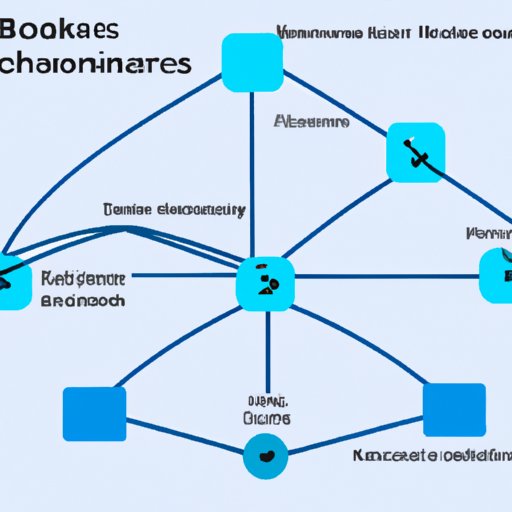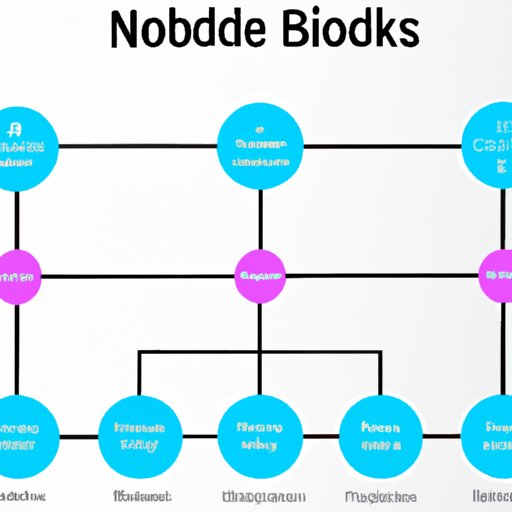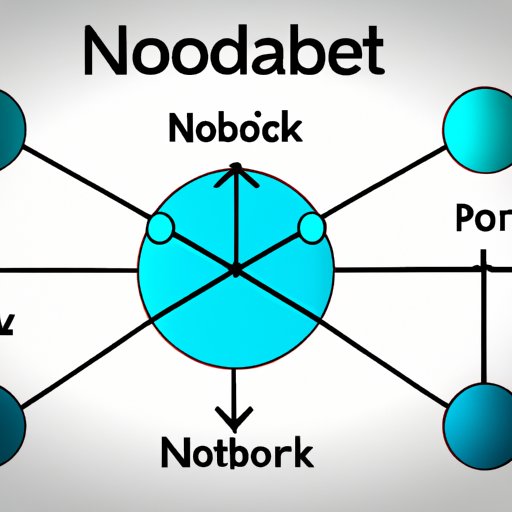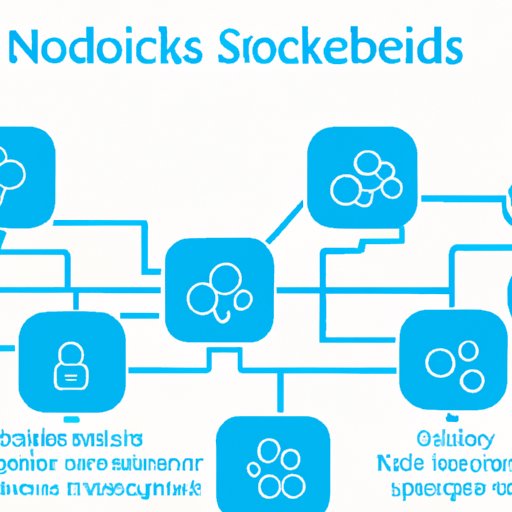Introduction
Blockchain technology has been gaining popularity in recent years as it offers enhanced security, efficiency, and transparency compared to traditional systems. Blockchain is a distributed ledger technology that enables secure data storage, immutability, and decentralized consensus. At the heart of blockchain networks are nodes, which play an integral role in the functioning of the system.
What is a Blockchain Node?
A blockchain node is a computer or server on a distributed network that stores a copy of the blockchain ledger and helps to maintain its integrity. Nodes are responsible for validating and relaying transactions, verifying blocks, and maintaining the network. As a result, they form the backbone of the blockchain and play an important role in its operation.
Why is it Important?
Blockchain nodes are essential for the functioning of blockchain networks because they help to ensure the integrity of the network and keep it secure from malicious actors. In addition, nodes enable users to access the blockchain and interact with it. Without nodes, the blockchain would be nothing more than a database and no one would be able to access or use it.

Exploring How Blockchain Nodes Work
In order to understand how blockchain nodes work, it is important to have an understanding of the blockchain network. A blockchain network consists of a series of interconnected computers, known as nodes, that store, validate, and relay transactions on the network.
Overview of the Blockchain Network
The blockchain network is made up of a number of interconnected nodes that all have a copy of the blockchain ledger. Each node stores a full or partial copy of the blockchain and is responsible for validating and relaying transactions. When a transaction is broadcasted to the network, it is then validated and verified by the nodes before being added to the blockchain. This process is known as consensus.
Decentralized System
The blockchain network is a decentralized system, meaning there is no single entity in control. Instead, the network is maintained by the nodes, which are independent of each other. This allows for greater security and trust in the network, as no single entity can manipulate the network or tamper with the data.
Understanding Consensus Mechanisms
Nodes are also responsible for reaching consensus, which is the process of agreeing upon the validity of a transaction. Different blockchains use different consensus mechanisms, such as proof-of-work or proof-of-stake, to verify transactions and add them to the blockchain. This helps to ensure the integrity of the network and prevents double spending or other malicious activities.

A Guide to Understanding Blockchain Nodes
Now that we have a basic understanding of the blockchain network, let’s take a look at the different types of blockchain nodes and the benefits of each type.
Types of Blockchain Nodes
There are several different types of blockchain nodes, including full nodes, light nodes, mining nodes, and supernodes. Full nodes are computers that store a complete copy of the blockchain, while light nodes only store a partial copy. Mining nodes are computers that are used to mine new blocks and receive rewards for doing so. Finally, supernodes are powerful computers that are used to process large amounts of data and provide services to the network.
Benefits of Different Types of Blockchain Nodes
Full nodes are beneficial because they provide the highest level of security and reliability. Light nodes are beneficial because they require less resources and can be run on devices with limited hardware. Mining nodes are beneficial because they help to secure the network and generate rewards for miners. Finally, supernodes are beneficial because they provide additional services to the network, such as data storage, processing, and analysis.
Building Your Own Blockchain Node
If you’re interested in running your own blockchain node, there are a few things to consider. First, you need to decide what type of node you want to run. Then, you need to make sure your hardware meets the requirements for running a node. Finally, you need to install the necessary software and configure your node.
Step-by-Step Guide
To get started, follow these steps:
- Choose the type of node you want to run (full, light, mining, or supernode).
- Make sure your hardware meets the minimum requirements for running a node.
- Download the necessary software and install it on your machine.
- Configure your node with the appropriate settings.
- Start your node and connect it to the network.
Requirements and Considerations
When setting up a node, it is important to consider the requirements and considerations. Make sure you have enough disk space, memory, and processing power to run a node. You should also make sure you have a reliable internet connection for communicating with other nodes on the network.

Examining the Role of Blockchain Nodes in Cryptocurrency Transactions
Blockchain nodes play an important role in cryptocurrency transactions. Let’s take a look at how nodes are involved in transaction verification and security.
Role of Blockchain Nodes in Transaction Verification
When a transaction is broadcasted to the network, it is then validated and verified by the nodes before being added to the blockchain. This process is known as consensus and it helps to ensure the accuracy and integrity of the transaction. The nodes also help to prevent double spending and other malicious activities.

Role of Blockchain Nodes in Maintaining Security
Blockchain nodes also help to maintain the security of the network by storing a copy of the blockchain and helping to ensure its integrity. If a node detects any malicious activity, it can alert the other nodes on the network and help to protect against potential attacks.
Conclusion
In conclusion, blockchain nodes are essential for the functioning of blockchain networks. They help to ensure the integrity of the network, enable users to access the network, and verify and validate transactions. There are several different types of nodes, each with its own set of benefits. Furthermore, nodes play an important role in cryptocurrency transactions by helping to maintain the security of the network.
(Note: Is this article not meeting your expectations? Do you have knowledge or insights to share? Unlock new opportunities and expand your reach by joining our authors team. Click Registration to join us and share your expertise with our readers.)
